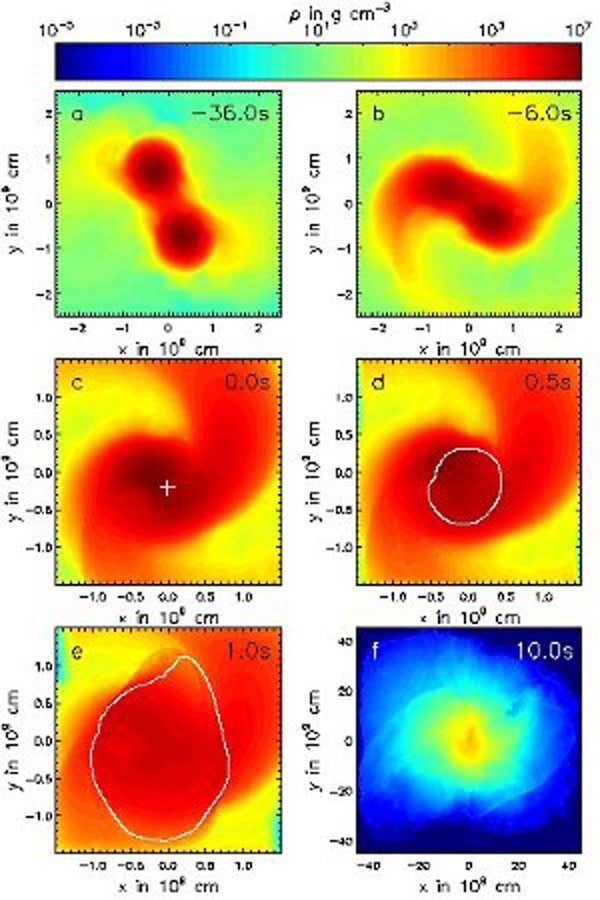Supernovae are spectacular events: Suddenly somewhere in the heavens a “new star” lights up and shines as bright as a whole galaxy consisting of billions of stars. The mechanisms behind these cosmic catastrophes are varied. Researchers at the Max Planck Institute for Astrophysics in Garching, Germany, have now used computer simulations to confirm that some of these bright supernovae are due to the merger of two white dwarfs, compact remnants of extinguished stars. As astronomers use supernovae to measure cosmic distances and study the expansion history of our universe, understanding their mechanism is one of the key challenges in astrophysics.
Intermediate-mass stars such as our Sun end their lives as white dwarfs consisting of carbon and oxygen. The stellar fusion reactor in their center is no longer active due to a lack of fuel. The stars have only the size of the Earth, but a high density. One teaspoon of matter would weigh about as much as a car on our planet.
In a binary system, two such exotic white dwarfs can form. As they orbit each other, they are emitting gravitational waves. The resulting energy loss shrinks the orbit, the stars approach each other and ultimately they merge. It has long been speculated that these events may produce Type Ia supernova explosions.
The supernova research group at the Max Planck Institute for Astrophysics has performed computer simulations of two merging white dwarfs in unprecedented detail. In the case of equal masses of the two white dwarfs, the merger is particularly violent. Part of the material of one white dwarf crashes into the other and heats up the carbon-oxygen material such that a thermonuclear explosion triggers. This disrupts the stars in a supernova explosion.
“With our detailed explosion simulations, we could predict observables that indeed closely match actual observations of type Ia supernovae,” said Friedrich Ropke of the supernova team. Therefore it has been demonstrated that white dwarf mergers contribute to type Ia supernovae, although this scenario probably cannot account for all these explosions.
“Supernovae are among the brightest observed cosmic explosions,” said Wolfgang Hillebrandt, director at the Max Planck Institute for Astrophysics. “How they form, however, remains largely unknown. With our simulations, we have shed light on at least part of the old riddle of the progenitors of type Ia supernovae.”
Further support for the picture that type Ia supernovae originate from mergers of white dwarfs comes from a recent paper by another supernova research group at the Max Plank Institute for Astrophysics. They show that the bulk of observed supernovae cannot be due to the white dwarf gradually accreting material from a normal companion star — the standard theory so far. At present the only alternative is the merger of two white dwarf stars.










